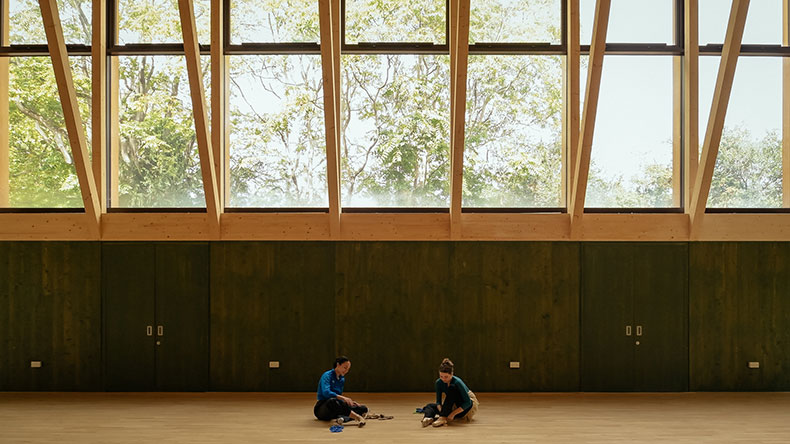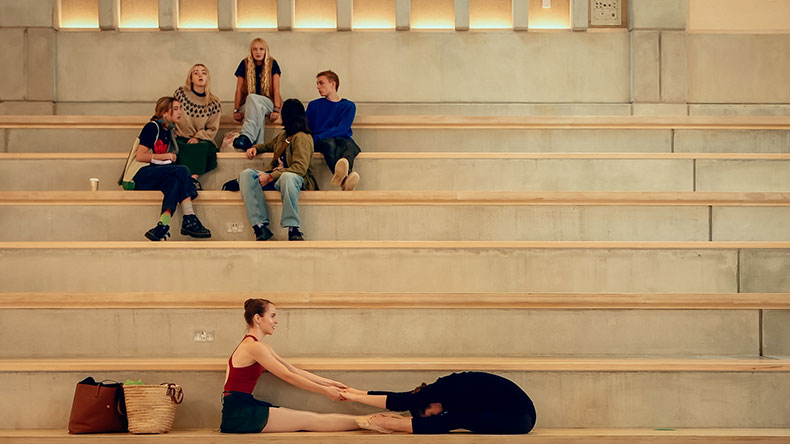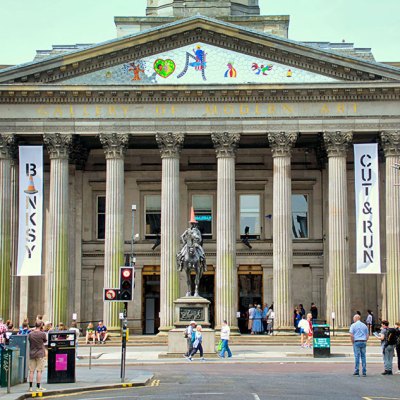The warring Florentine families of the Renaissance included a curious civic gesture as part of the fortress-palaces they erected along the city’s streets and squares. It became customary to include a stone bench at the base of the heavily rusticated exterior walls – initially, it is said, as a reference to the tiered benches around the Piazza della Signoria that served as the theatre for civic assemblies and political wrangling. These benches became an essential part of the palazzo type, where retainers, tradesmen, hangers-on and beggars would wait below the massive sills of windows deliberately placed too high for an outsider to see in. Centuries after the warring families have faded from view, along with the motivations for their metre-thick walls, their benches let hot tourists sit gratefully in the shade of the cold stone.
At the beginning of a new film by the architectural photographer Jim Stephenson, the camera watches a long bench along a massive wall, punctuated by shallow pilasters, as people – mainly women and children – wait, look at their phones, talk and watch – for a bus, for a child, for a friend; it is for the viewer to guess. The building is a new one, and this is the first generation of people to use this bench; the pilasters are still crisp and the wall has not yet had its first graffiti.
Still from The Architect has Left the Building (2023) by Jim Stephenson, showing Kingston Town House designed by Grafton Architects. Courtesy RIBA Gallery; © Jim Stephenson

Photographing architecture for its own sake – and using architecture as a setting for fashion shoots, music videos or primetime dramas – involves careful staging that asks the viewer to read meaning into brick, concrete, metal and glass. Stephenson’s film – currently showing at the RIBA Gallery – elongates that single moment of a photograph, or the scene-setting second of film footage, into a meditation on time. The bench is the first location in a sequence of frames, shown in pairs across a split screen, where the still camera waits and watches as people move across its field of vision. The stationary point of view merges the identity of the camera with that of the building itself, patiently watching and waiting, accommodating movement and use that will gradually wear away at its fabric over the coming years. This building-as-camera projection is amplified by the sounds layered over the footage: vibrations to the fabric of the building in the form of footsteps, bangs and knocks, rain and wind, captured by sound artist Simon James using contact mics, like sound through a stethoscope. The buildings start to seem alive, just on a life cycle far slower than that of the people that crawl in and around them. Like the mountains that folklore claims to be sleeping giants, the buildings patiently await the transfiguration that comes with time.
Sometimes the view is that of surveillance, the camera perched high above a slender bridge or in the corner of an art gallery. In some frames, a real security camera looks back at the viewer, doubling and redoubling the capture of time and movement like repeating mirrors. One camera adopts the perspective of the security guard, unseen behind a bank of screens, observing the lucky few who enjoy these carefully honed pieces of architecture. How fortunate are the young dancers stretching out their legs on the clean timber steps of a Stirling Prize-winning university building; the neat children whispering in the beautiful miniature theatre at their private school; the residents who won the jackpot in the form of a beautiful community centre or swimming pool, somehow escaping the banality of cost-cutting project managers. More pointedly, a gardener in stained shorts and headphones pushes a lawnmower back and forth below a perfectly formed college library, inside which students enjoy the luxury of contemplation.
Still from The Architect has Left the Building (2023) by Jim Stephenson, showing Kingston Town House designed by Grafton Architects. Courtesy RIBA Gallery; © Jim Stephenson

The buildings in Stephenson’s film – all well-designed, acclaimed pieces of architecture – are made of solid, substantial material put together with care. They are captured at the beginning of their lives – as part of a ritual of promotion and press tours – when they are at their most perfect and unsullied. The rain of the Lake District has not yet worn down the timber cladding of a new museum; footsteps have not worn a shine into the centre of a footbridge; only occasionally are the mundane interventions that cause architects to curse – the laminated sign Blu-Tacked to a glazed door – visible to the camera’s eye. Over time there will be repairs, dirt, straggly pot plants, plastic litter bins.
Buildings are said to be ‘finished’ when construction ends, but this is really their moment of birth. After a decade or two of love and appreciation, they go through a protracted and usually problematic mid-life, before – if time is kind and public opinion held at bay – emerging as heritage, their histories smoothed over by the adaptation to new uses for new times. Their flaws and fragilities are exposed in the ugly phase and, if serious enough, condemn the building to demolition or major surgery. In Stephenson’s observations we don’t see the ageing of insulation, the gnawing away of wiring by mice or the slow dripping and cracking of pipes. The creaking of air handling units, the filters clogging up; faults in the software of the building management systems. The seals in double-glazing units failing. Black mould creeping up plasterboard. Lurking behind the optimism of dappled light falling across a perfect wall, the unmoving eye of the camera poses a nagging question: how many of these buildings will survive for future generations, or is their seeming solidity concealing frailties that will lead to the wrecking ball? How quickly, or slowly, will all that investment – of money, of carbon, of labour – turn to dust?
‘The Architect has left the Building’ is at the RIBA Gallery, London, until 12 August.



